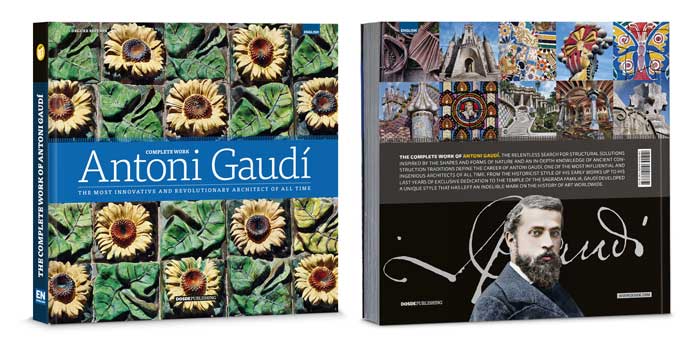Casa Calvet, a winning project
Located on Carrer Caspe of Barcelona, Casa Calvet was Gaudí’s first work in the Eixample, the neighbourbood that evolved following the demolition of the Catalan capital’s medieval walls. The project was an initiative of the heirs of cotton industrialist Pere Màrtir Calvet, who commissioned Gaudí with the construction of a property that combined commercial use with residential use.
Moving away from the Historicism that had prevailed in his former works, the architect devised a more conservative work (if we compare it for example with Casa Batlló or Casa Milá) but elegant design, which was awarded the prize from the City Council of Barcelona for being the best building of the year 1900.
This award that forms part of the biography of Antoni Gaudí reflects an acceptation in his own time that many other works were not fortunate enough to have.
The exterior of Casa Calvet
When designing the Casa Calvet façade, made from sandstone from the nearby mountain, Montjuïc, Gaudí started with a very ordered plan, with five openings per floor and an original crowning of five lobulated forms typical of Catalan Baroque.
The artist manages an extraordinary contrast between the flat wall (based on Roman ashlars, with smooth even frame and planed centre) and the rhythmic dynamism of projecting volumes, more obvious when the sun strikes the façade. Many of these solutions set a trend and were seen in numerous houses to follow in the Eixample. As for the detailed rostrum on the main floor, with intricate sculpture and wrought iron, it pays homage to Pere Màrtir Calvet, patriach of the family, who died just before the acquisition of the land.
A luxury residence
In the interior spaces, Gaudí makes the most of the combination of materials: ceramic steps, mirrors, oak furniture, columns of artificial granite, iron railings, brass handles and stucco walls. With regards to its structure, the architect manages to make the stairwell appear much bigger by placing it between two of the four patio wells of the building, meaning that natural light can flood into the space.
As for the symbolic aspect, Gaudí incorporates religious and literary inscriptions, such as “Faith, Fatherland, Love”, motto of the Jocs Florals, the most important literary competition of the era.
The Casa Calvet furniture
With regards to the craftsmanship carried out in Casa Calvet, Antoni Gaudí paid particular attention to cabinetmaking, which was taken care of by Casas i Bardés, his usual suppliers. As was the custom, he himself designed the furniture, both in the shop –much of which still remains there– as on the main floor.
All of it is made from oak, with dovetailed pieces, without the need to use nails or screws. The furniture in the main apartment, with gilt carving, adopts organic curved forms of ergonomic style.
The most complete book on Gaudí’s work
Antoni Gaudí was considered one of the most important architects in history. He created an artistic language that is as surprising as it is inimitable.
The deluxe format of this edition means Antoni Gaudi’s works can be seen at their best thanks to 3D illustrations, excellent photographs and drawings.
Published by Dosde, the book is a complete testimony of the trajectory of a great architect, whose innovation has transcended to this day.





